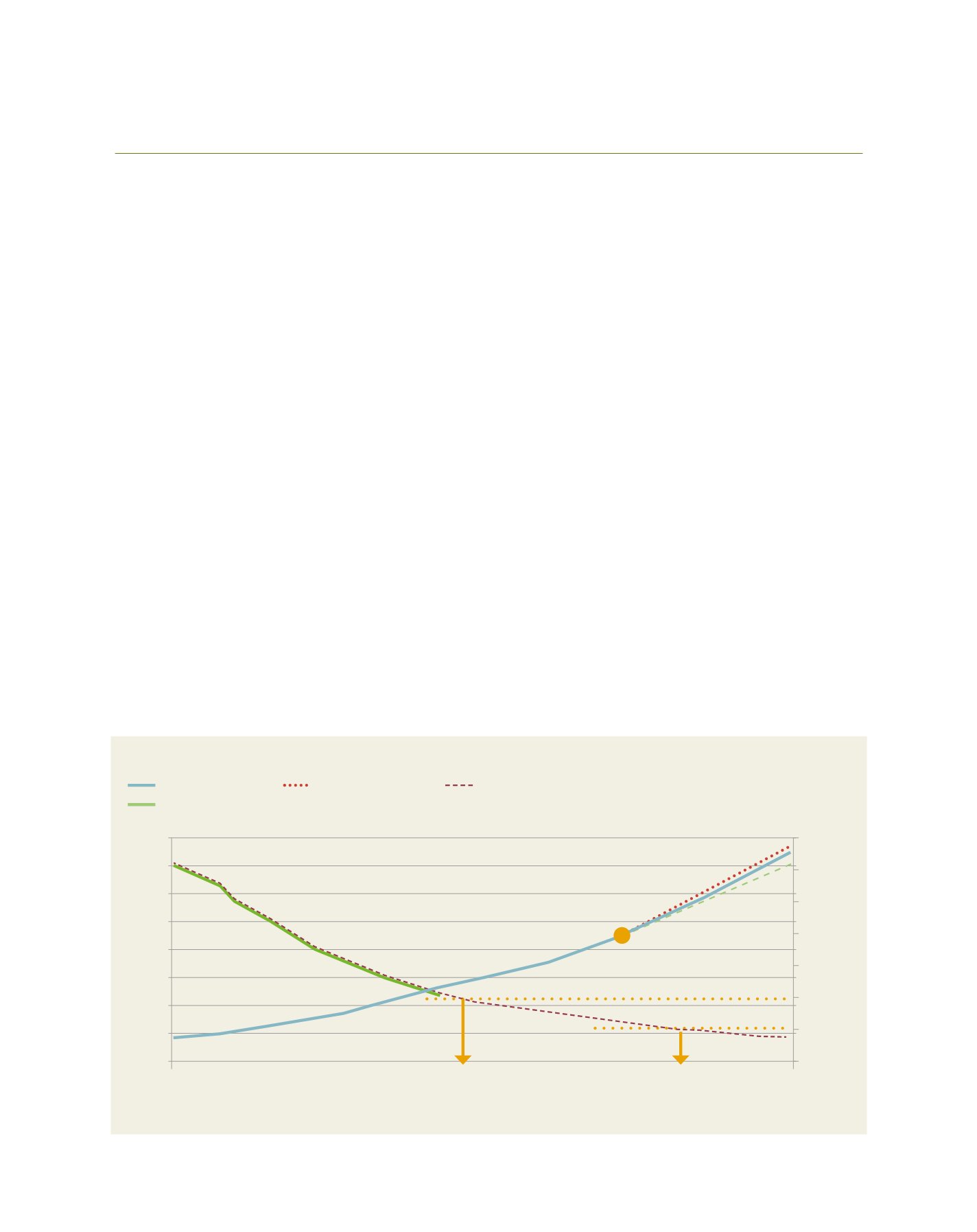

[
] 65
A B
et ter
W
or ld
T
he water resources available for Egypt’s entire gamut of
economic and service activities is extremely reliant on
the River Nile, with a dependency ratio estimated at 97
per cent
1
. A fixed 55.5 billion m
3
/year passes through the High
Aswan Dam – Egypt’s quota, according to the 1959 treaty
between Egypt and Sudan – constituting 92.5 per cent of the
country’s total renewable water resources; the remaining 7.5
per cent being quantities of renewable, fossil groundwater and
desalinated water plus a small number of rainfall showers.
The total actual resources currently available for use in Egypt
are 59.25 billion m
3
/year, while water usage is 80.25 billion
m
3
/year. The gap between the needs and availability of water
is approximately 21 billion m
3
/year, and this is managed by
reuse from drainage water, shallow groundwater and treated
wastewater. The overall efficiency of the Nile system in Egypt
exceeds 80 per cent, but the country’s total water demand is
114 billion m
3
/year to meet a steady population that has been
estimated at 96 million capita for the year 2017. Therefore, 34
billion m
3
/year of virtual water is being utilised.
Downstream from the High Aswan Dam, the River Nile is
100 per cent regulated using a number of large barrages and
irrigation structures with the result that the water resource
system in Egypt is partially closed, and thus has a tendency
to retain pollutants.
Water management policy over the last five decades main-
tained that drainage water should be reused in the Nile
delta, a decision that created severe environmental concerns,
causing a number of mixing stations to be closed.
Since 1990, Egypt has reached the so-called water poverty
line with respect to the per capita share of water of almost
1,000 m
3
/year. In 2017, the share decreased to almost 600
m
3
/year, and it is expected to fall to less than 500 m
3
/capita
before the year 2030, when the population is expected to
touch the 130 million mark. Meanwhile, an increase in
cultivated land in Egypt is vital to produce the necessary
quantities of food to feed the growing population and secure
social and political stability in the country. This will add
more challenges to improve Egypt’s utilization of its limited
water resources and to develop new resources to cover the
needs of the cultivated areas as well as other uses.
Egypt’s vulnerability to climate change touches several
sectors and the common cause of this vulnerability is water.
The results of studies on climate change impact show that
Egypt will face numerous threats to its economy, social and
environmental sustainability, agriculture and food security,
water resources, energy, human health, coastal zones and
physical infrastructure. Climate change studies anticipate
that the productivity of two major crops in Egypt, wheat
and maize, will be reduced by 15 to 19 per cent but that this
Water management strategies for the Nile Basin
National Water Research Institute, Planning Sector, Nile Water Sector,
Ministry of Water Resources and Irrigation, Egypt
160
140
120
100
80
60
40
20
0
3500
3000
2500
2000
1500
1000
500
0
1935
1940
1945
1950
1955
1960
1965
1970
1975
1980
1985
1990
1995
2000
2005
2010
2015
2017
2022
2027
2032
2037
Recorded population
Estimated population
Water share/capita ‘pop record’ + ‘pop records and estimates’
Water share/capita
Source: national water resources plan (2017-2037)
Change per capita water share of Egypt
Population (million)
92 million at 2017
Population records / estimates (million) and water share (m
3
/capita/year)
Water poverty
Water scarcity
m
3
/capita/year
















